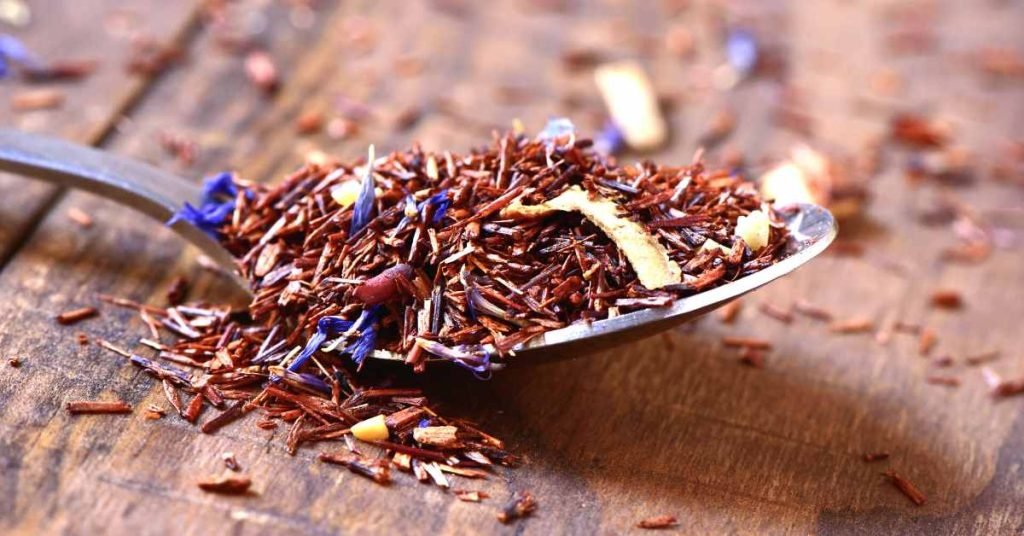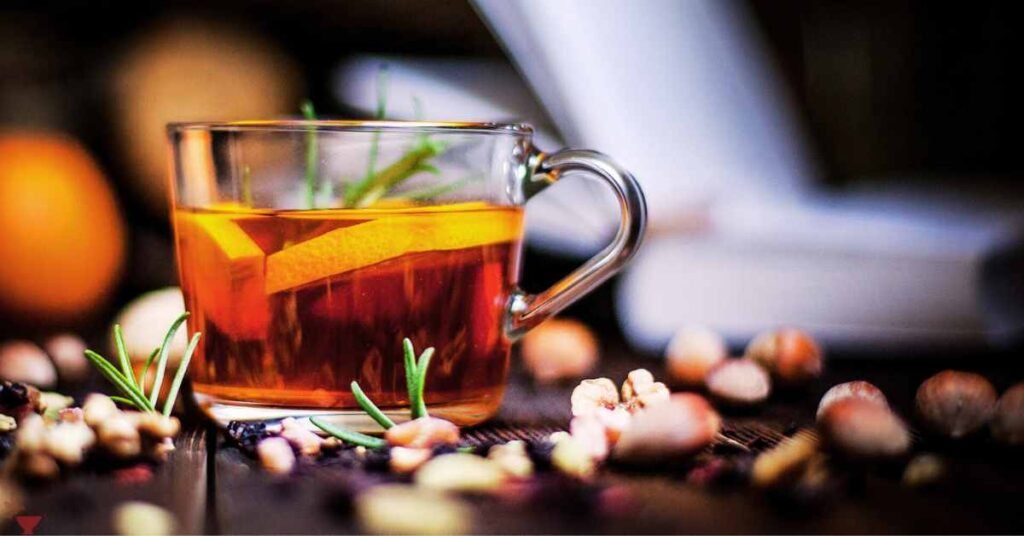Rooibos is a herbal tea that is produced from the leaves of the Aspalathus linearis plant, which is native to the Cederberg region of South Africa.
The process of producing rooibos tea involves several steps, including harvesting, processing, and packaging.
Below we will share all the steps of Rooibos tea production and help you understand where one of the world’s favorite teas comes from.
How Is Rooibos Tea Produced?
Rooibos tea production includes various delicate steps and each is as important for the final flavor and quality of the tea. We will explain in detail the entire process below, while you can purchase the superb quality Rooibos tea at our online store.
Rooibos Production Steps
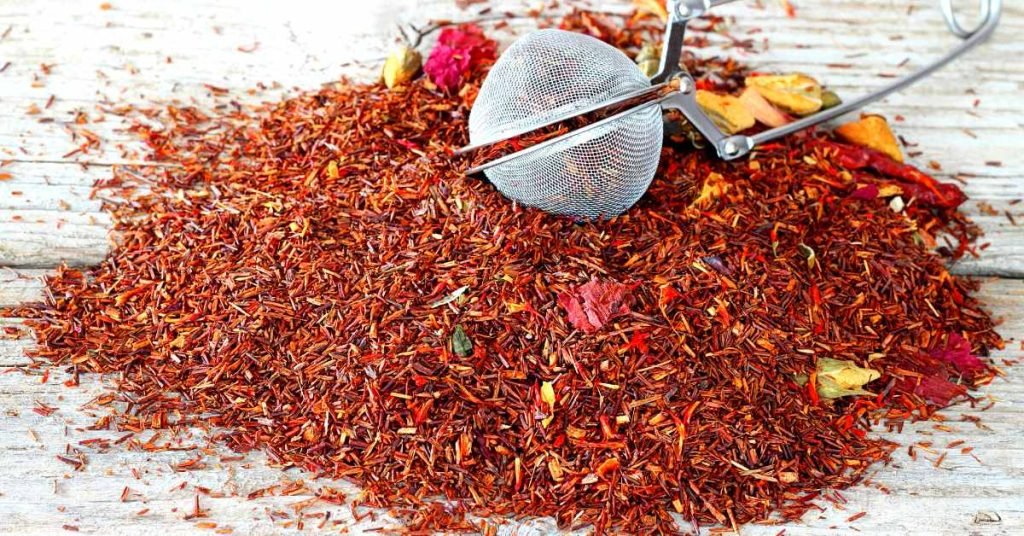
Harvesting: The first step in producing rooibos tea is harvesting the leaves of the rooibos plant. The plant is typically harvested in the summer months, between January and March. The leaves are cut from the plant using a sickle, and only the new growth is harvested to ensure the highest quality of leaves.
Fermentation: After harvesting, the leaves are bruised to help release their natural oils and flavors. Then, they are left to ferment in heaps for up to 24 hours. During this time, the leaves turn from green to a rich reddish-brown color. The fermentation process is what gives rooibos tea its characteristic flavor and aroma.
Drying: Once the fermentation process is complete, the leaves are spread out to dry in the sun. This step is important to stop the fermentation process and remove any remaining moisture from the leaves.
Cutting and sieving: After drying, the leaves are cut into smaller pieces and then sieved to remove any twigs, stems, or other unwanted particles.
Packaging: The final step in the production process is to package the rooibos tea leaves. The leaves are typically packaged in airtight containers to preserve their freshness and flavor. The packaged rooibos tea can then be sold and enjoyed as a delicious and healthy beverage.
History of Rooibos Tea
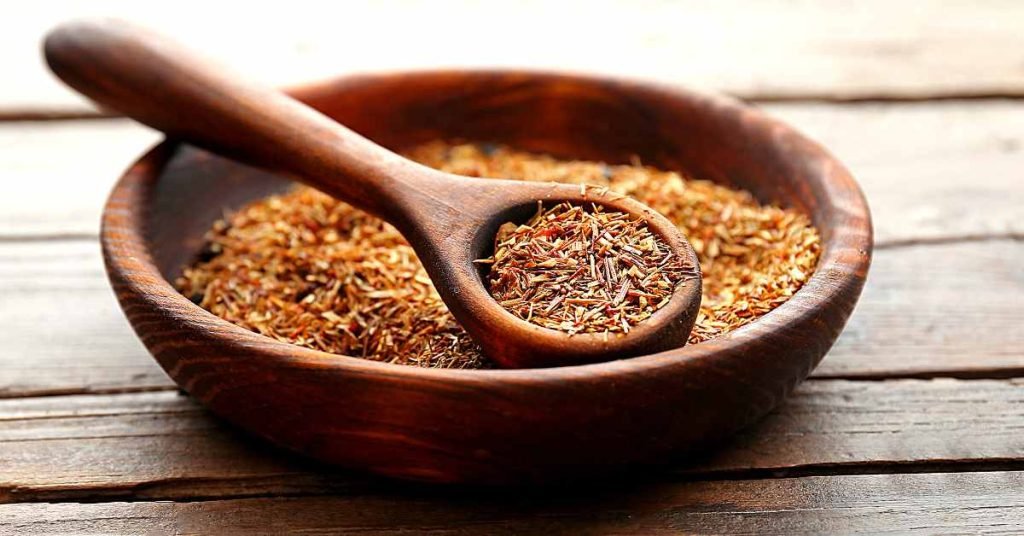
Rooibos tea, also known as red bush tea, is a type of herbal tea that is native to South Africa. The history of Rooibos dates back centuries, and tea has played an important role in the culture and traditions of the indigenous people of the region.
The first recorded use of Rooibos as a beverage dates back to the late 18th century, when local Khoisan people in the Cederberg region of South Africa began brewing the leaves of the Rooibos plant as tea.
The Khoisan people believed that the tea had medicinal properties and used it to treat a variety of ailments, including allergies and digestive issues.
In the early 20th century, a Russian immigrant named Benjamin Ginsberg began commercializing Rooibos tea. Ginsberg recognized the potential of Rooibos as a healthy beverage and worked to cultivate the plant and promote its consumption.
His efforts helped to popularize Rooibos tea in South Africa and beyond.
Why Is Rooibos Confused with Chinese Red Tea?
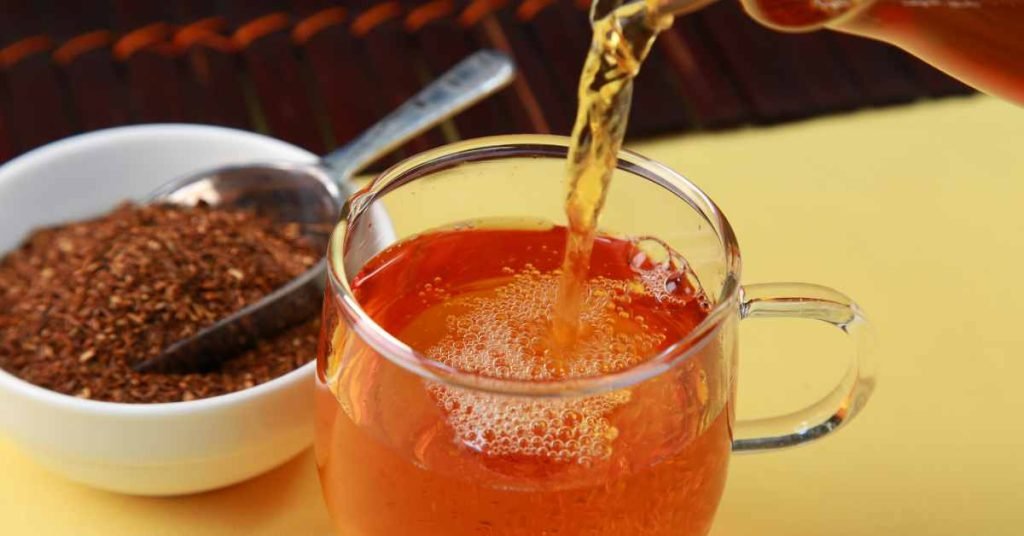
Rooibos tea is sometimes confused with Chinese red tea, however, these two teas are actually quite different in terms of their origin, flavor, and processing.
As we said earlier, Rooibos tea is a herbal tea that is produced from the leaves of the Aspalathus linearis plant, which is native to the Cederberg region of South Africa.
The tea is made by fermenting and then drying the leaves, which gives them their characteristic reddish-brown color and sweet, nutty flavor.
Rooibos tea is naturally caffeine-free, low in tannins, and high in antioxidants, making it a popular choice for people looking for a healthy, caffeine-free beverage.
On the other hand, Chinese red tea, also known as black tea in the West, comes from the Camellia sinensis plant, which is native to China. The tea leaves are hand-picked, withered, rolled, and then oxidized before drying.
This process gives the tea its characteristic dark color, strong flavor, and caffeine content. Unlike rooibos tea, Chinese red tea is high in tannins and caffeine, which can provide a stimulant effect.
The confusion between the two teas may arise from the fact that both teas are often referred to as “red tea” due to their similar color. However, it is important to note that rooibos tea is a herbal tea, while Chinese red tea is a true tea made from the Camellia sinensis plant.
Can I Drink Rooibos Every Day?
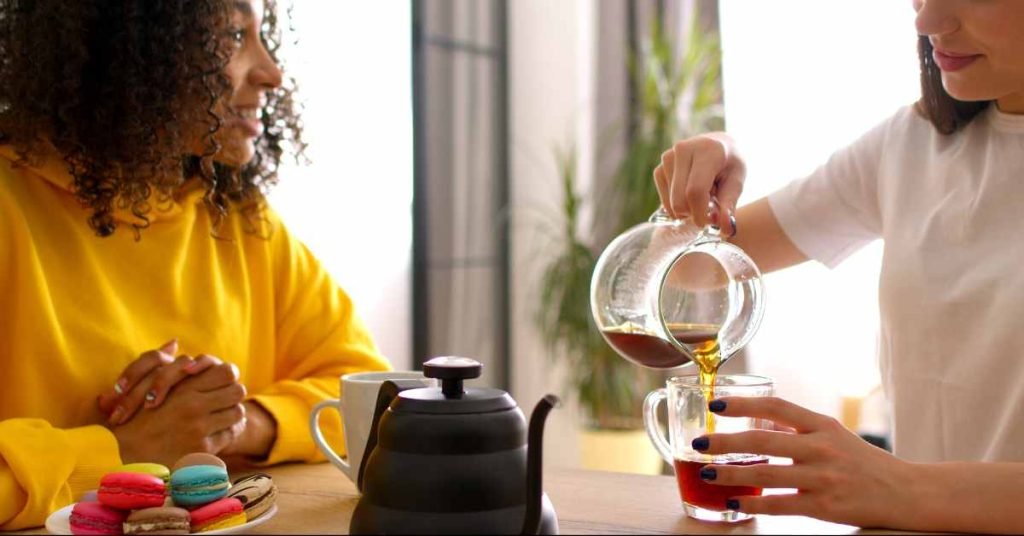
Yes, you can drink Rooibos every day! Rooibos is a type of herbal tea that is naturally caffeine-free and low in tannins, making it a healthy alternative to traditional tea and coffee. In fact, drinking Rooibos regularly may provide a number of health benefits.
Rooibos contains antioxidants that can help to reduce inflammation, improve heart health, and boost the immune system.
It also contains minerals like magnesium, calcium, and potassium, which can help to support bone health and reduce the risk of osteoporosis.
However, like any beverage, it’s important to consume Rooibos in moderation. While there are no known side effects to drinking Rooibos, excessive intake may lead to dehydration or other health issues.
It’s recommended to limit your intake to 2-3 cups per day.
Today, Rooibos tea is enjoyed around the world for its unique flavor and numerous health benefits. The tea is made from the leaves of the Aspalathus linearis plant, which grows exclusively in the Cederberg region of South Africa.
This plant is caffeine-free and low in tannins, making it a healthy alternative to traditional tea and coffee.
Medical Disclaimer
Itsnevernotteatime.com cannot and does not contain medical/health advice. The medical/health information is provided for general and educational purposes only and is not a substitute for professional advice.
Statements made on this website regarding the herbal and natural products offered on this website have not been evaluated by the food and drug administration as the FDA does not evaluate or test herbs. This information has not been evaluated by the US Food and Drug Administration, nor has it gone through the rigorous double-blind studies required before a particular product can be deemed truly beneficial or potentially dangerous and prescribed in the treatment of any condition or disease.
It is not meant to substitute for medical advice or diagnosis provided by your physician or other medical professionals. Do not use this information to diagnose, treat or cure any illness or health condition.
Accordingly, before taking any actions based upon such information, we encourage you to consult with the appropriate professionals. We do not provide any kind of medical/health advice. The use or reliance of any information contained on this site is solely at your own risk.
Please visit this FDA website to clear any confusions you have about food and dietary products and their ingredients:
Please visit this FDA website to clear any confusions you have about food and dietary products and their ingredients: https://www.fda.gov/Food/DietarySupplements/default.htm
MEDICAL DISCLAIMER
Itsnevernotteatime.com cannot and does not contain medical/health advice. The medical/health information is provided for general and educational purposes only and is not a substitute for professional advice.
